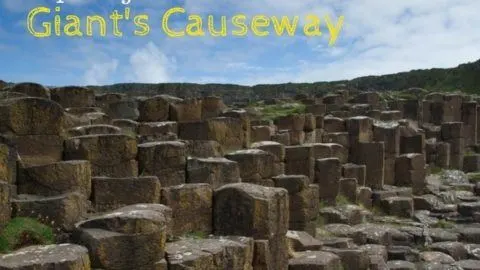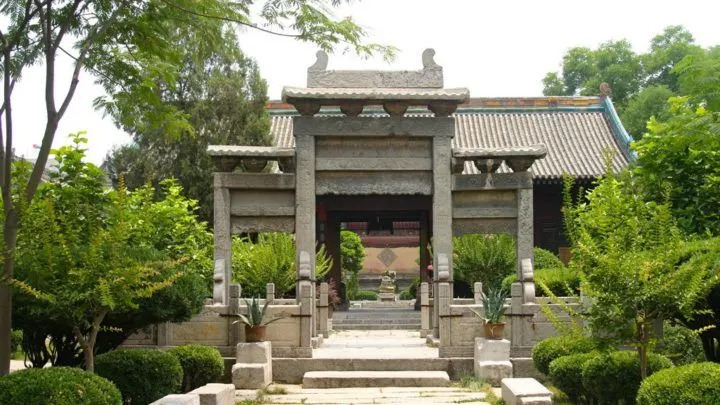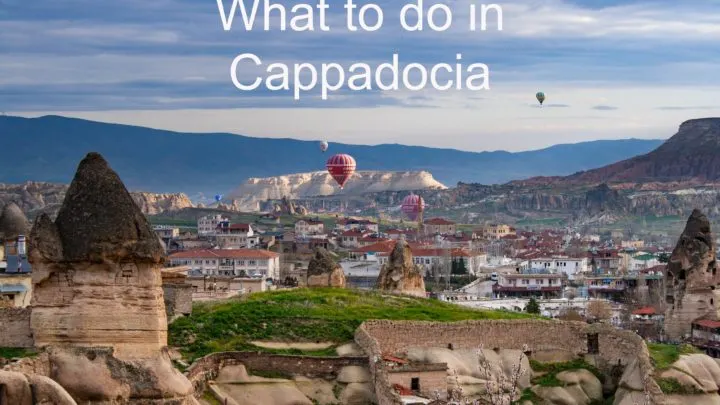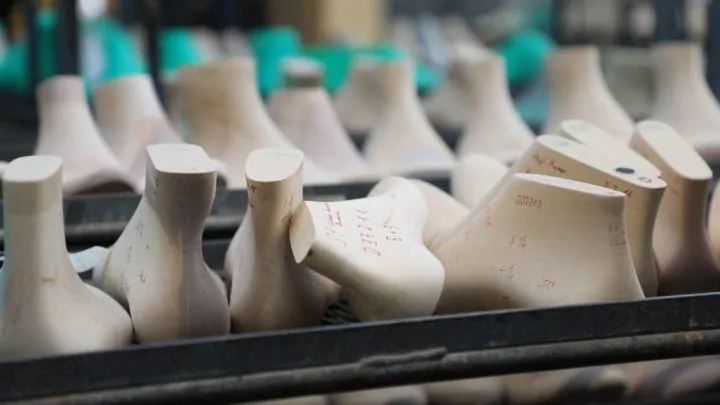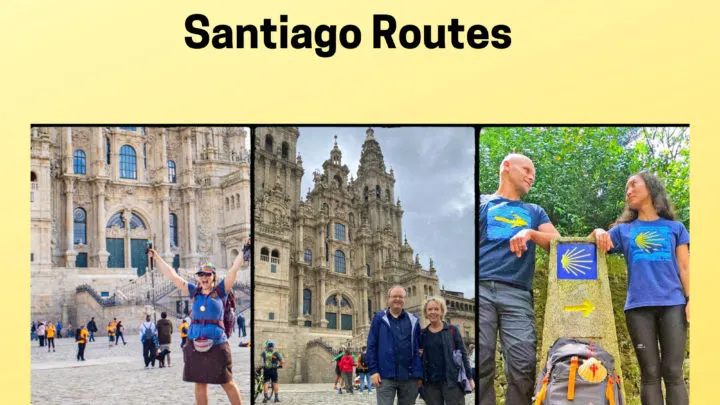Are you planning a trip to Spain? Check out the amazing world heritage sites. Culture, history, and nature are all represented, and each one of these places will enrich your Spanish experience.
Spain is one of those countries. You know the kind, the kind that gets under your skin, calls to you in your dreams both awake and asleep. She’s like a siren. Once you’ve seen her, experienced her warm breeze, seen the views of the olives that seem to go on forever, walked Madrid’s Plaza Mayor, and sampled the many tapas, you are beyond smitten. Beyond!
Needless to say, Jim and I have been back time and time again, and one of the things we like doing most is visiting the world heritage sites that Spain has accumulated. A testament to the strategic location of the Iberian Peninsula as well as the rich, cultural history that she has encouraged, they really make the country shine.
UNESCO has inscribed 49 sites altogether, some however, not in Spain proper. We’ve visited quite a few of them, and I have to tell you, they do not disappoint. My favorites are a mixture of the culture and history, in places that I may not have otherwise visited. I love the smaller cities, because it just seems life moves a little slower there, and the tapas pubs are less chaotic.
Below we’ve written about the sites we’ve visited, and since we haven’t been to all of them, we’ve asked some travel experts to chime in. The best way to use this list is to find out where you want to go, find the best ones, then build your itinerary. Don’t build it first; it won’t work.
Note: We’ve added the UNESCO list number associated with each site if you want to read the formal reason why it has been inscribed as an important global site. To go to it, just type in “https://whc.unesco.org/en/list/#/”.


#314 Alhambra, Generalife, and Albayzin, Granada
There’s no better example of stunning Moorish architecture in Spain than that found at the incredible Alhambra, Generalife, and the Albayzin in Granada. All three offer a different glimpse into medieval, Moorish Spain.
The fortress of Alhambra was captured by those intrepid Spanish royals, Ferdinand and Isabella during their conquest over the Moors in the 15th century. Unlike in other parts of the conquered territories, they chose to keep the resplendent palaces and gardens for their own seat of power, saving the richness of this past for future generations to appreciate.
Of course, that’s not to say that the palaces and gardens remained intact and flourished over the past 500 years. In fact, the whole complex fell into disrepair and was neglected with those nefarious Napoleonic forces attempting to blow up the entire citadel during the 18th century. Luckily, the attempt wasn’t completely successful and renovations and reconstruction has been taking place steadily since the 19th century.
Today, large parts of the Nasrid palaces have been restored to their former glory and can be explored with a timed entry ticket. For the best experience of the Alhambra sites, plan a visit for as early in the day as possible. Enter the palaces, marvel at the intricately decorated porticoes, windows and arches. Then head to the gardens of the Generalife a little later in the morning.
The Generalife was the private domain of the kings and queens, and while it is maybe not as lavishly designed, it makes up for that in the elegant simplicity of the lush gardens and serene pools and fountains. This is the perfect place to take in the sights of the palaces below while breathing in the scented aroma of flowers and succumbing to the calming effects of the gurgling water.
Later in the day, make your way through the winding alleys and cobblestone streets of the Albayzin, the former Moorish and Jewish quarter of the city. Tapas bars, bazaars, and open air markets offer plenty of opportunities. Just be sure and make it to the top of the hill to the Mirador San Nicolas for the best sunset views of the Alhambra complex on the adjacent hill.
Granada is a beautiful city and there is plenty to do, eat, and see. I would spend at least two nights there, so you can take your time. One place we have stayed and loved is the Áurea Catedral, very centrally located with lots of eating options around.

#316 Burgos Cathedral
The Cathedral of Burgos is an architectural gem, even though it comes with the interior clutter that only centuries of Spanish fanatical worship can beget.
Nevertheless, it stands out as one of the most exceptional examples of late Gothic cathedrals in Spain and Europe.
What started as a simple shrine in the 13th Century, was overtaken in the 15th Century by the same German masons who decorated the ornate Cathedral of Cologne. The result was, in the words of one chronicler, “an eruption of flamboyant late Gothic.” Which is not necessarily a bad thing.
The Cathedral’s exterior exhibits in its towers the literal pinnacle of the Gothic style, with its characteristic simple lines interrupted constantly by unceasing sculptural flourishes. It’s still Gothic, but its ornateness borders on the Rococo.
The interior offers no respite, as every column, every arch, and every chapel compete to outdo every other one in decorative excess. Saints, flanked by arches, decorated by vinery, explode from every surface.
In a way, the entire edifice could almost be summed up with a visit to only one of its chapels – the Chapel of the Constables. That chapel is a late Gothic masterpiece all on its own, and an enduring testament to decorative and religious excess.
Strangely, though, it all works. The Burgos Cathedral is a three-dimensional riot of form that is rescued mostly by the soaring columns that always draw the eye up. There, the heavenward gaze arrives at a gazebo of light, whimsy, and windows over the transept.
If you are spending the night, this small hotel was in a good area, clean, and has plenty of great restaurants in the vicinity: Pension Boutique Doña Urraca.
Suggested by Tom of Travel Past 50

#312 Historic Center of Cordoba
Built up during the Moorish period as a city of architectural wonders compared only to Damascus, Constantinople, and Baghdad, medieval Cordoba was a wonder to behold and still is today. At the heart of all of these palaces and religious structures is the Grand Mosque. The grand mosque was the second largest mosque in the world for hundreds of years and was eventually converted to a cathedral in the 13th century, insuring its preservation throughout the coming centuries.
The Grand Mosque-Cathedral is truly a wonder to behold. With its interlocking red and white stone arches and row after row of marble columns, the interior space seems to stretch on forever in all directions. The rich tapestry style stone work almost feels like being inside of an elaborately ornate Turkish carpet. This is still a working cathedral so be respectful and dress appropriately.
There’s more to Cordoba’s historic center than the Grand Mosque. There’s the old Jewish quarter where visitors can wander the maze-like alleyways catching glimpses into the beautiful casa-patio, or courtyards, of the ancient domiciles. For the best experience, have lunch in one of these beautiful old homes. Especially good meals can be found at Casa Mazal.
Cordoba was a Roman city before the Moors came and there is still evidence of those times to be found along the river Guadalquivir. Just walk south from the Grand Mosque through the old city gate, the Puerta del Puente, and cross the river on one of the oldest remaining Roman bridges. The Puente Romano was built in the 1st century and is one of my favorite bridges to be found anywhere.
We recommend spending at least a couple of nights, because the tapas bars and old town are that much fun. In fact, don’t leave Cordoba without trying the famous Tortilla at Bar Santos. As for staying, we like to recommend the Eurostars Conquistador full of old world charm.


#318 Monastery and Site of the Escurial, Madrid
Anyone looking for a good day trip out of Madrid won’t do wrong with a trip to the Royal Monastery of St. Lawrence del Escurial. While this complex might seem to be lacking in terms of flourish, style, and decor it more than makes up for that with grandiose architecture designed to symbolize the strength and purity of Spain at the height of its Golden Age.
The mystic King Phillip II–OK who doesn’t perk up their ears at the mention of mysticism?–directed the construction in the late 16th century with the plan of combing the religious and royal aspects of governance in one location. As such, there is more than just the monastery here. Included in the complex are a royal palace, the pantheon, libraries, chapter houses, and museums.
A visit to the Royal Monastery should include time spent in the incredible library with its massive collection of objects, scrolls and books. Even if you’re not that excited about books, it’s still a must see. This is one area of the museum that contrasts happily with the starkness of the rest of the Monastery. The library is colorful, full of light and color thanks to its unique design and its frieze covered ceiling.
Perhaps my favorite room, however, is the Room of Battles. Officially this was the King’s Gallery and visiting dignitaries had to pass through on their way to see the king. The walls are covered with tapestry style frescos depicting major Spanish military exploits and victories. Very cool!
Other points of interest include the domed cathedral, the pantheon where Spanish Kings and Queens are laid to rest, and the Italian style gardens. All in all, a visit to the Royal Monastery of St. Lawerence makes for a history filled day away from the city.
Have you listened to our podcast? Streets and Eats is all about world wide travel and the best food to eat while you are there. Check it out!

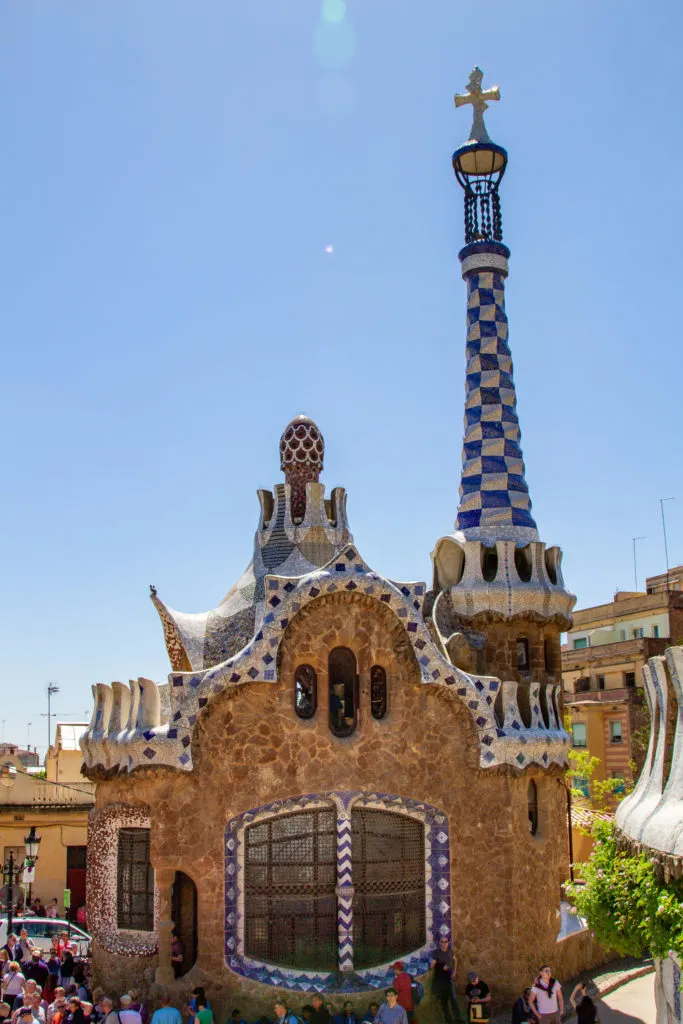
#320 Works of Antoni Gaudi
You can’t go to Barcelona and not be enchanted by the architectural works of Antoni Gaudi. His influence on the city is just too important and too prevalent to miss.
Of the seven sites included in the UNESCO listing, perhaps the most important and best place to start, is the Basilica de la Sagrada Familia. This fantastical modernist Cathedral has become the iconic symbol of Barcelona. Gaudi’s architectural direction began the massive church in 1883, after construction had already begun. Major design changes were made and his vision has been the guiding light for construction that hasn’t stopped yet.
Walking through the interior is like walking through a forest built of stone, glass, iron, light, and air. I expect this is the feeling Gaudi intended. In the lower levels of the Basilica is a museum dedicated to the life and works of Antoni Gaudi with some of the best examples and explanations of his construction and architectural style. The other site not to miss is Park Guell.
Park Guell is exactly what it sounds like, a city park. This is a fantastic place to get away from the hustle and bustle of the city, and it offers some stunning views. But the main draw, naturally, is the flamboyant works of Antoni Gaudi found throughout the park. Be sure and get a selfie with “el drac,” the colorful salamander poised on the stairs at the park entrance.
Other buildings found in Barcelona designed by Gaudi include the Palau Guell, Casa Mila, Casa Vicens, and Casa Battlo. All of which can either be entered for viewing or at least seen from the street.

#348 Old Town of Avila with its Extra-Muros Churches
The medieval walled city of Avila sits on a low hill overlooking the surrounding countryside. The high stone walls and eighty-seven massive round towers present an imposing defense that has effectively protected the city for over a thousand years.
Known as the “City of Saints and Stone” because of the medieval fortifications (the Stone) and because it is the birthplace of St. Teresa (the Saints). Avila is a perfectly preserved example of a Spanish medieval walled city.
Our first view of these impressive walls came in late spring when the hills were still showing some green and the poppies were out in all their crimson glory. It was such a beautiful scene. Who could resists getting out and walking the Route de Muralla de Avila? This three kilometer long city wall walk is the perfect way to experience the fortifications that have made Avila famous.
Most of the walk is done up on the city walls, providing birdseye views of the old churches and houses inside. Other parts of the walk take you down off the wall and through gardens around the base of the fortifications. Sunset and nightimte offer particulary romantic views of the towers and walls, highly recommended if time permits.
A trip to the medieval walled city of Avila can easily make a full day trip out of Madrid. It is an easy one hour drive by car, or a two hour train ride.

#311 Old Town Segovia and Its Aqueduct
Segovia’s impressive Roman Aqueduct, the magnificent Alcazar, and the 16th century Gothic Cathedral each on their own could have put Segovia on the World Heritage List. But to have all three in this one magnificent city? That had to be a no-brainer for the WHS committee.
While it’s true the aqueduct is impressive, it is possibly the best-preserved elevated Roman aqueduct in the world, that’s not really enough of a draw to keep visitors in the city. Let’s face it, once you’ve seen it, you’re done. But the rest of the old city? Magical.
It’s true, Segovia could easily be done on a day trip from Spain. But the best way we’ve found to visit Segovia is to plan on staying for at least one night. If you’re lucky, book a room in the Hotel Spa La Casa Mudejar. This magnificent palace turned hotel is located a stone’s throw from the Plaza Mayor and the Gothic cathedral, right in the heart of the old quarter.
Treat yourself to a night of luxury in a former 15th century Mudejar palace without breaking the bank. Here you’ll find all the spa services you could ever want: sauna, spa, massage, Turkish hammam, even a heated pool.
But don’t spend all of your time in the hotel. Get out and enjoy the city after the day tour crowds have left. Enjoy a late drink at a cafe on the plaza, walk down the quietly echoing cobblestone alleys, and just soak in the ambience. Segovia is sure to capture anyone’s heart.

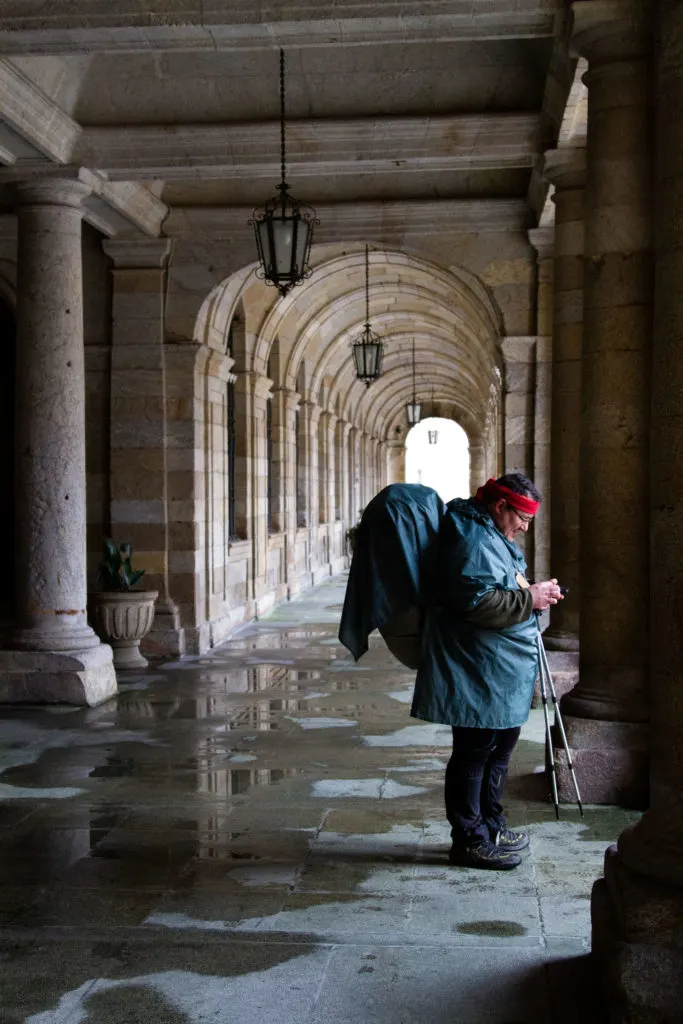
#347 Santiago de Compostela (Old Town)
Santiago de Compostela is one of the most famous pilgrimage sites in Christendom. The story goes back to the ninth century when it is said an old hermit saw light shining down from the stars onto an old Roman Tomb. Later it was discovered that the remains of the Apostle St. James were interred in the tomb.
Word got out and soon pilgrims began making the long trek to see the site. They came from all over Europe. Naturally, that simple tomb had to be enlarged to allow more and more worshippers access to the site. And thus, Santiago de Compostela was born. Then in the tenth century, invading Moors conquered the city to the ground.
Miraculously, the city was retaken and completely rebuilt over the next century. This collection of medieval, Romanesque, Gothic, and Baroque architecture is unparalleled and is why the entire old town has been inscribed on the World Heritage list.
However, perhaps one of my fondest memories of Santiago de Compostela, was of walking through the old covered market, the Mercado de Abastos, sampling different cheeses , cured meats, and wines from the region. When you go to Santiago de Compostela be sure and stop at the market, pick up some Tetilla cheese and a bottle of Galician wine to share with your fellow pilgrims.


#379 Historic City of Toledo
Toledo is another of those magical cities that just seems to rise up on a hill out of the Spanish plains. Approaching by car from the distance the shining Alcazar is like a beacon to the weary traveler eager for the end of the road and a good nights rest.
Like so much of Spain, Toledo is steeped in history and culture. We arrived in the late afternoon on a hot summer day. Driving across the old stone bridge to enter the old town, we found plenty of leafy, well shaded plazas with al fresco cafe’s getting ready for the evening. After checking in to our central old town hotel, we were heading back out the door as the sun was going down.
This was the golden hour of the Spanish summer. The sun sets in all its glory stretching shadows into long thin, Greco-esque figures, and the day begins to cool off. The towns people were coming out to enjoy the breezy air. Wine was being poured, tapas plates were being passed around, a small soccer game broke out in a corner of the plaza, lovers kissed, and the city breathed a sigh of relief, shedding the heat of the day.
We found a small table in a busy corner of the plaza, enjoyed a few glasses of wine, tried some of those tapas, listened to a nearby guitar strumming an old song and just relaxed. It was the perfect end to the day. For us, Toledo had checked all the squares.
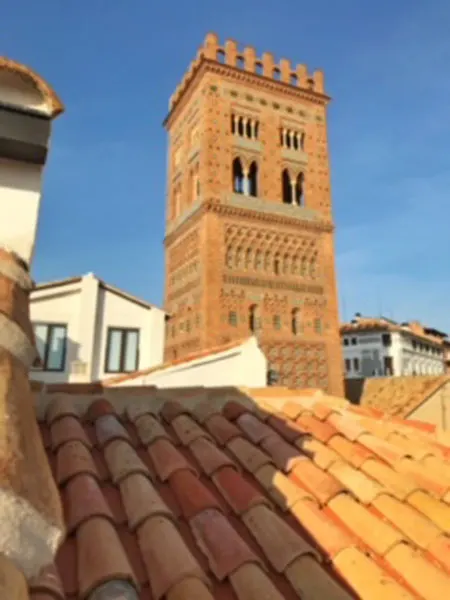
#378 – Mudejar Architecture of Aragon
Mudejar architecture can be found in the province of Aragon, including the charming little city of Teruel. The tower and church the Cathedral in Teruel is a famous landmark in the area and a highlight of Mudejar architecture.
Mudejar architecture is Moorish influenced architecture that flourished from the 12th to the 17th century in Spain. In the centuries after the unification of Spain by Ferdinand and Isabella, the Arabs who chose to remain in Spain converted to Christianity. Arab artisans still worked in their traditional manner though and merged their style with the prevailing Christian Gothic influence. They used elaborate brickwork, tiling patterns and arches to decorate buildings. For example,The towers that came to characterise Mudejar architecture is a reworking of a traditional Minaret.
Teruel is a family-friendly city with lots of kid-friendly activities nearby including nature adventures like rock climbing, hiking and kayaking. Thanks to the presence of a major dinosaur fossils, there is also a giant dinosaur inspired theme park and museum called Dinopolis. Foodies will appreciate the famous local Serrano ham. Small and easily walkable, Teruel also has the usual Spanish plaza perfect for people-watching over a glass of wine.
If you are staying in the area, we suggest a hotel in Teruel, the Reina Cristina, which has fabulous views of the Mudejar architecture of the city gate tower from its roof terrace.
Suggested by Shobha of Nylon Living
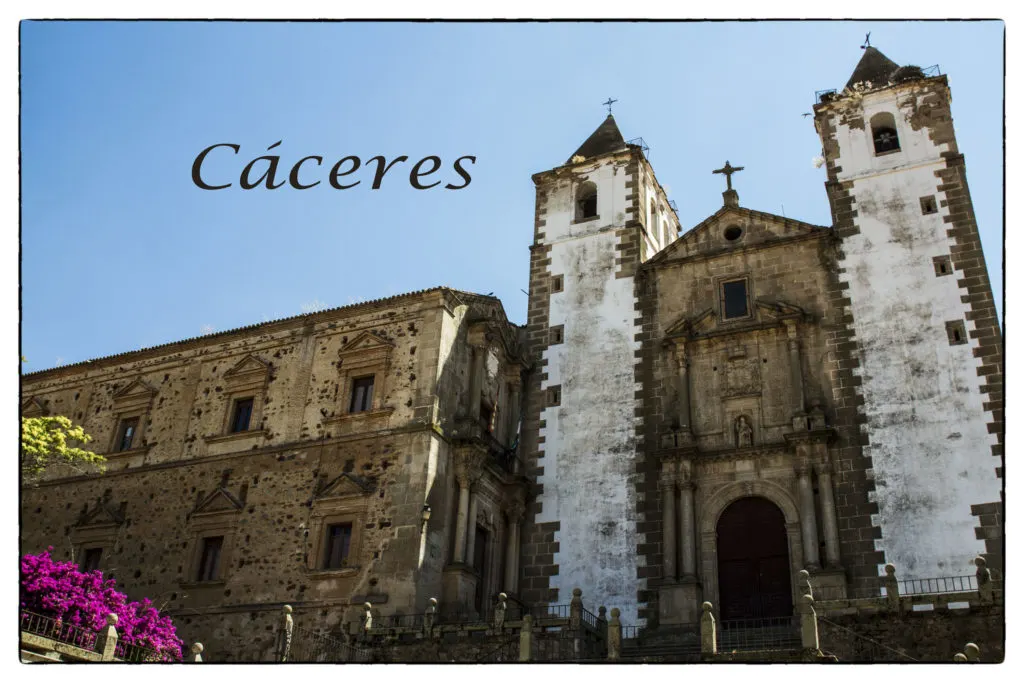
#384 Old Town of Cáceres
Cáceres ahas been at the crossroads of major trade routes for millennia. Its roots lie somewhere in forgotten prehistory but Romans, Goths, Jews, Moors and Christians have all helped shaped the city as it stands today. There are a few very good walking routes that lead the visitor through and around the major sites.
Perhaps the best of these, and the one we chose for our visit, is the “Walk Through History Route.” This route wanders through all of the important historical parts of the city. It starts and ends at the Old Town Hall and includes notable buildings like the 12th century Arabian tower Torre de Bojaco, the old Jewish Quarter, the Roman Forum of the Balbs, and of course Santa Maria Cathedral.
It was this last one, strangely enough, that our friend was looking forward to most. Here, she said, we would find the Statue of San Pedro de Alcántara on one corner of the church in the plaza. Kissing his toes, she insisted, was a must for visitors to Cáceres. Sure enough we found the statue, just as she promised, in a corner of the plaza standing in the sun. And, yes, his toes were golden and shining brightly.
Well, anyone who knows what a hot summer day in central Spain will do to a bronze statue standing full on in the sun knows what happened next. She walked up reverently to the statue slowly rose on a tip toes and placed her lips gently on Saint Peter’s toes, then immediately let out a yelp and hopped quickly back rubbing her burned lips.
So go to Cáceres, marvel at the incredible mixture of Roman, Gothic, Jewish, and Christian architecture. But please wait till San Pedro is in the shade before attempting to kiss his toes.

#383 Cathedral, Alcázar, and Archivos de Indias in Seville
Sevilla owes its place on the World Heritage List, like so many others in Spain, to its Moorish and Christian Andalusian past. Here can be found one of the best preserved and grandest Alcazars remaining in Spain. Additionally, the cathedral here is the largest Gothic building in the world. The third gem found in the heart of the old town is the Archivo de Indias.
Visiting the Alcázar will take an easy two hours. Wander from room to room, marvel at the incredibly ornate decorative plaster work, and imagine what life for the sultans must have been like in the beautiful apartments. My favorite part of the Alcázar, however, is the gardens. This is one of the most beautiful garden complexes in all of Spain.
Next to the Alcázar, the Cathedral is a massive and stunning building. The interior is a quiet, solemn and cool respite from the blazing heat outside. Of course, this is also the final resting place of Christopher Columbus. His intricately decorated tomb is in the middle of the cathedral and can’t be missed.
Finally, a trip to the Archivos de Indias is a must for anyone visiting Seville. Not only is the building one of the most important in the city, being the former Consulate of the Merchants in the Americas, but it now is a repository for the archives of maps, scrolls, books and other objects from the Spanish colonies in the new world. This is a fascinating place full of history on display.
After all that history, it’s time to unwind. Kids will love going for a ride on one of the many caleche (horse drawn carriage) down tree lined avenues and through quiet, shady parks. Or just find a quiet table in a plaza where you can enjoy a cool drink and watch the world go by.
When you are all tuckered out head back to the Hilton Garden Inn Sevilla for a quick dip in the pool to cool off before going to sleep.

#381 Old City of Salamanca
Salamanaca is one of those European university towns that seems older than time. We’re talking Oxford or Cambridge old. However, even with its ancient architecture spanning everything from Romanesques to Baroque, thanks to the student population it still has a lively youthful feel to it.
The primary sites here include the old Roman bridge, the old and the new cathedrals, the university, and the Plaza Major. In fact, this is probably the grandes Plaza Major in Spain. This is the place to be, whether for people watching during the day, tapas and drinks in the evening, or a full dinner, the Plaza Major is truly the heart of the city. Our recommendation is to find a hotel nearby, such as the Palacio San Sebastian, so you can feel as much a part of the city as possible.
Naturally, visitors here will want to spend time walking through the old town and marveling at all the amazing architecture. But one of my favorite museums is also found here. I love it when old city buildings, like factories or mansions, are turned into museums, and Salamanca delivers with the Museum of Art Nouveau and Art Déco in the Casa Lis.
The Casa Lis was an old mansion in the old town that has since been repurposed into a museum. The museum is full of art deco and art nouveau objects like dolls, posters, and glassware. The building is amazing and the artwork is unique. Definitely a must do when in Salamanca.
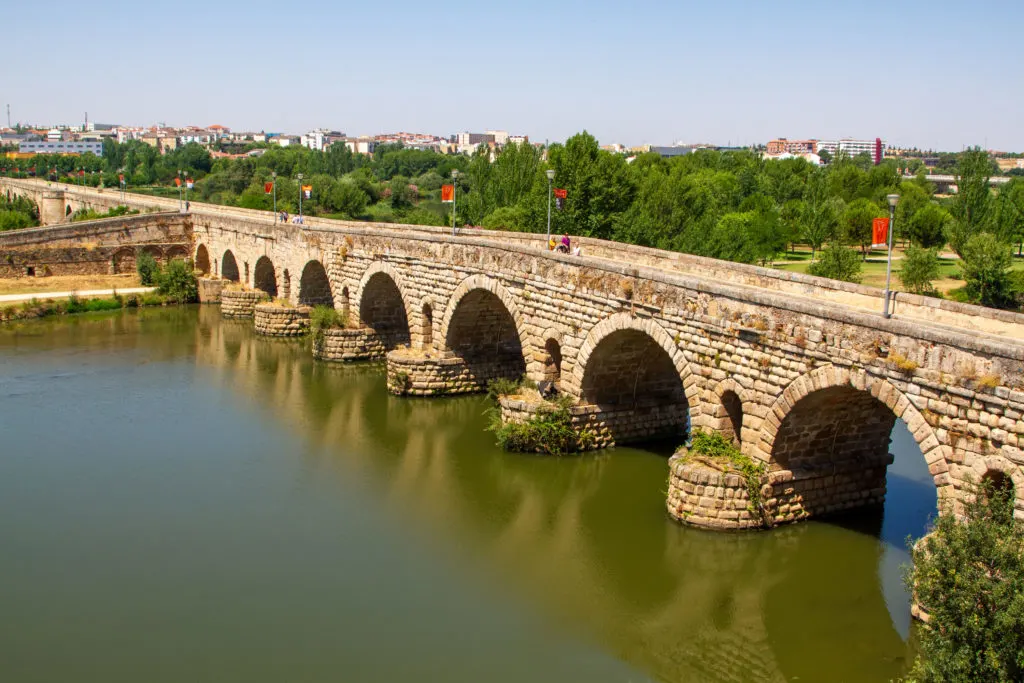
#664 Archeological Ensemble of Mérida
Founded in the year 25 BCE as a Roman colony, what would eventually become modern day Merida, was the the capital of Lusitania and had everything imaginable in a Roman capital. Luckily, these antiquities have survived in amazingly good condition. Some of the more noteworthy of these remains include the Roman Bridge, an amphitheater, a theater, the circus, and an incredible water system and raised aqueduct.
We spent an entire day scrambling around the Roman ruins in Mérida, and then it was time to eat. You can really build up an appetite playing at archaeologist and luckily, Mérida was ready to satisfy. This is the heart of Extremadura, and we had even driven past oak filled meadows where black pigs were running around gobbling up acorns.
Jamón Ibérico is definitely on the menu, but for the heartier appetite, we needed something a little more substantial. That same acorn fed pig offers up its tenderloin for a dish called Solomillo Ibérico. We found it at a recommended restaurant right in the center of town, El Puchero de la Nieta. Here the succulent tenderloin cuts are perfectly prepared and served with another Extremadura speciality, torta de casar, sheep’s cheese. No one will leave hungry, guaranteed.

#669 – Routes of Santiago de Compostela: Camino Francés and Routes of Northern Spain
Camino de Santiago is one of the most popular hiking pilgrimage routes in the world.
The Camino de Santiago (Way of St James) covers several routes leading to the tomb of St James the Apostle in the Cathedral of Santiago in Spain. The most visited, the easiest to hike and the most crowded route is the French Way from St Jean Pied de Port to Santiago. But one of the most beautiful and quietest routes is the Northern Way from Irun to Santiago. Both routes (the French Way and the Northern Way) are UNESCO World Heritage sites of Spain. The Northern Way (Camino del Norte) is preferred by foodies and nature lovers.
The Northern Way goes along the coast of northern Spain from the Basque Country, Cantabria, Asturias to Galicia. Pilgrims on the Camino del Norte see the best of ’Green Spain’: marvelous cities (like San Sebastian, Bilbao), charming medieval towns (like Santillana del Mar, Llanes), scenic fishing villages (like Pasaia, Luarca, Tapia de Casariego ), mesmerizing sandy beaches, breathtaking sea cliffs, stunning vineyards and some of the finest examples of medieval churches, and monasteries in Spain.
Foodies especially appreciate tasty pintxos (finger food), seafood, and local txakoli wine from northern Spain. Keep in mind, the north of Spain is famous for its delicious seafood! So, if you want to make a foodie pilgrimage, Camino del Norte is the Camino route to take.
The entire route from Irun to Santiago covers 828 km and it can be done in a month. There are enough pilgrims hostels (called ´albergue´) to sleep overnight on the route. I strongly recommend pilgrims hostels over hotels on the Camino, as pilgrims hostels are fantastic places to meet other pilgrims and hikers and where special Camino community bonds are made.
The best months to hike Camino del Norte are July and August when the chance of rain in green northern Spain is the lowest. If you want to hike the Camino almost effortlessly don’t overpack (take only necessities with you and the rest if you need you can buy on your way), use vaseline against blisters, hike in good hiking socks and good hiking shoes. I’ve done 828 km of the Northern Way in 28 days getting only one blister and here you can check out my recommended ultralight Camino de Santiago packing list.
Put your hiking shoes on, and embark on the Camino del Norte. Trust me, one of the most fascinating life experiences awaits you. Buen Camino!
Suggested by Milijana Gabrić of World Travel Connector

#665 Royal Monastery of Santa María de Guadalupe
When I found out we had the chance to stay in a World Heritage Listed monastery in Spain, I was a little skeptical. I was sure that if they had rooms for regular tourists there’s no way they’d be in the historical part of the monastery. And even if they were, what kind of hotel room would a monks room in a monastery be?
Well, turns out I was completely surprised. The hotel rooms at the Royal Monastery of Santa Maria de Guadalupe are all in the Gothic cloister areas of the complex. Each room is decorated tastefully with historical objects and include wifi and a flat screen TV. This is a once in a lifetime experience that is sure to please even the most jaded of travelers.
The monastery is an amazingly well preserved 600 year old structure with three museums and art work by El Greco, Goya, and Michelangelo among many others. Visitors staying at the Monastery must enter the historic parts of the buildings with a tour, but are welcome to take their time and remain inside for some time after the tours have finished.
We spent the afternoon exploring the museums, courtyards, cloisters and gardens. It was magical. Then, after a short siesta in the rooms it was on to dinner in the courtyard. Extremadura specialities like lamb, roast kid, and rabbit were on the menu. We stayed up chatting with the waiter and other guests, drinking wine, and just enjoying an amazing evening in the Monastery.

#685 Doñana National Park
Most of the World Heritage Sites on our list are of the historical type. Highlighting Roman civilizations, or Moorish influences. But Doñana National Park is just that, a vast national park along the Guadalquivir river at its estuary to the Atlantic.
On the southern coast of Spain, this park is one of the country’s most biodiverse regions with marshlands, lagoons, dunes, and scrubland it is home to five threatened bird species and is the wintering location for hundreds of thousands of water fowl every year. One of my particular favorites, the greater flamingo, flock here in the thousands. What a sight to behold!
One of the best places to stay for a visit to Doñana National Park is the pilgrimage town of El Rocio. This dusty, quiet town is almost as picturesque as the park itself. The centerpiece in the town square is the Hermitage of the Virgin of Mary of El Rocio. Legend has it that a sheperd found a carving of the Virgin Mary in a tree trunk. Whenever he tried to take the carving to the nearby town’s church, it would miraculously transport itself back to the tree trunk at night.
The first hermitage was built on that site and and the pilgrimage town of El Rocio grew up around it. Now, every year around Whitsunday, nearly a million pilgrims arrive in the town to honor the Virgin Mary. If you are planning a visit to Doñana National Park, this would be a fascinating time to come, but be aware it will be crowded.
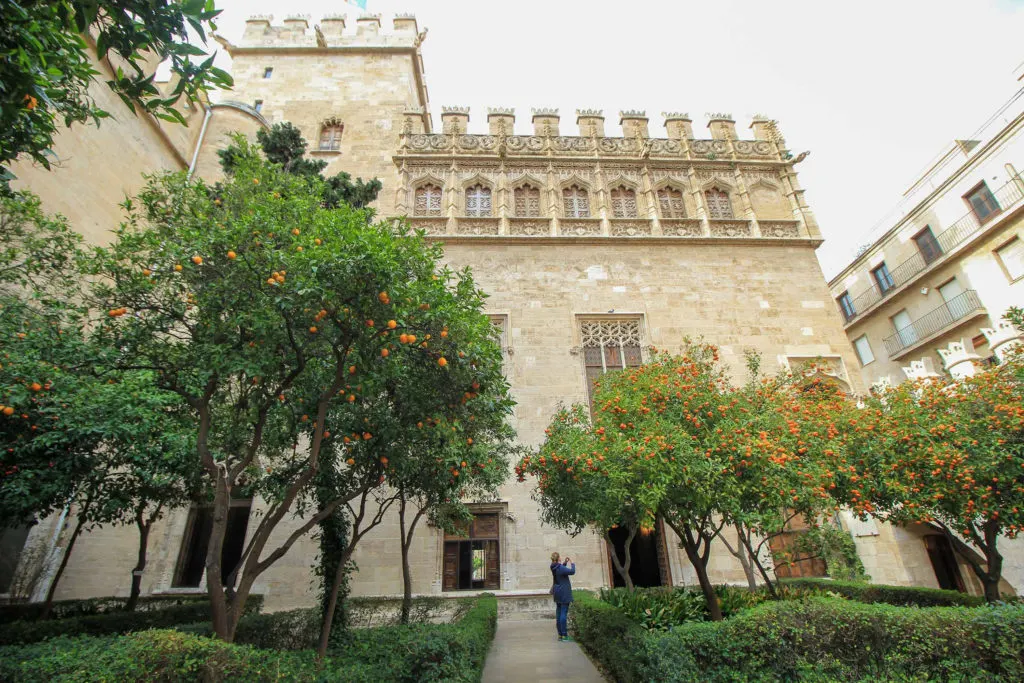
#782 La Lonja de la Seda de Valencia
The “La Lonja de la Seda de Valencia” or also known as “The Silk Exchange” is definitely one of the most beautiful UNESCO World Heritage Sites in Spain! This attraction is located in the old town of Valencia, and was built between 1482 and 1533. At that time, the economic prosperity of Valencia was achieved, which also led to this imposing building. The whole area consists of 3 sections where the main hall, Sala de Contratacion, with its imposing 17-meter-high columns being the most famous attraction.
I personally enjoy the visit very much and can recommend a tour to anyone who is interested in history and architecture. I think for children it could also be exciting, because you visit four different halls. The garden with the orange tree is also beautiful and invites you to take pictures.
Right in the vicinity you will find numerous other sights that can be visited via a city walk. Interesting is for example the Central Market of Valencia, which is only a few steps away.
As a hotel tip right nearby, we can recommend the Hotel Plaza Mercado & Spa. Here scores the modern and stylish design and of course the fabulous location!
Suggested by Martina at Places of Juma


#804 Palau de la Música Catalana and Hospital de Sant Pau, Barcelona
Palau de la Música Catalana is an impressive concert hall located in the heart of Barcelona. It’s a great place to visit if you love music and architecture.
Not only does the building look beautiful from the outside but the inside too. The ceilings have detailed artwork and colourful stained glass in the middle.
It is one of the most picturesque places in Barcelona!
What also makes it unique is the fact that it is the only concert hall in this style to be listed as a World Heritage Site by UNESCO.
I absolutely loved visiting it because I was amazed by how beautiful the place was and the music playing in the main hall was outstanding.
Older kids may appreciate and like to learn about this place, but it may not be the best place to go to with young kids.
To make the most of your visit, book your ticket online, and book the earliest slot to avoid crowds.
Palau de la Musica Catalana is close to many incredible attractions. You can visit Barcelona Cathedral, El Born neighbourhood and the Arc of Triumph.
A nearby hotel you want to check is H10 Madison 4* Sup. It is a very modern hotel that offers comfortable and luxurious rooms. The best thing about the hotel is the rooftop bar and swimming pool. You can get incredible views of the city from it.
Suggested by Christina of My Little World of Traveling
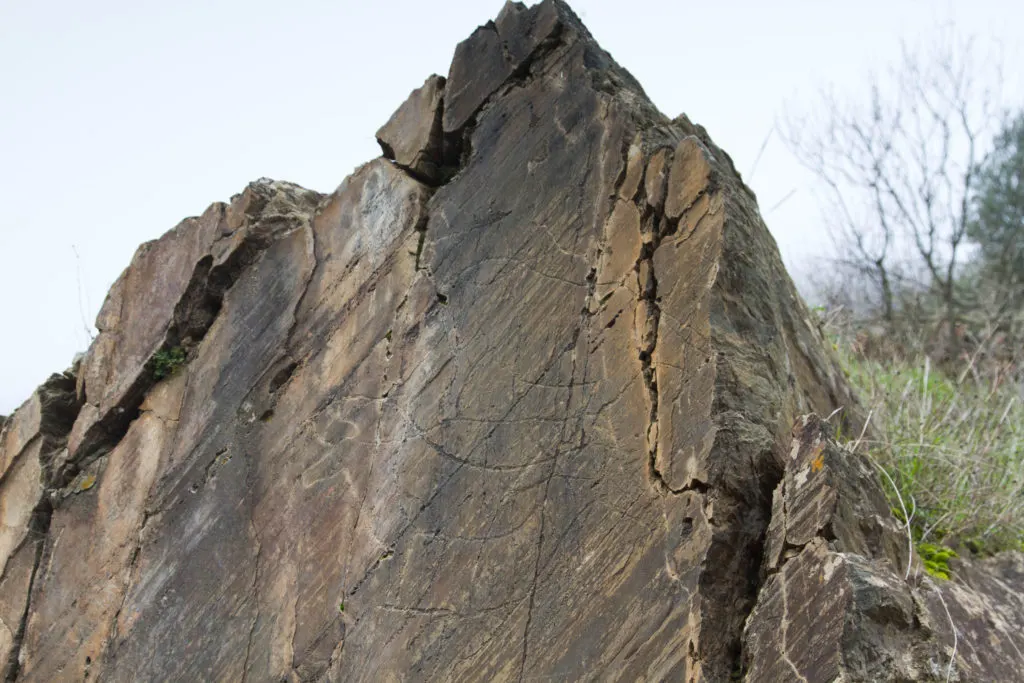
#866 Prehistoric Rock Art Sites of the Côa Valley and Siega Verde
These two sites have had human occupation from the end of the Paleolithic period. I’m not sure what possessed prehistoric man, and woman, to carve the hundreds of rock faces and thousands of animals over the years. However, all of these drawings make up a vast open air art collection that is magical to behold.
While there are many theories about the origins and purposes of this Paleolithic art, in the end, we’re all left trying to figure it out for ourselves. Hiking through the spectacular river valleys is both rewarding and peaceful.
It is imperative to have a reservation and a guide for any visits to Siega Verde so plan accordingly. Additionally, keep in mind that it could be very hot during the summer, so bring water, sunscreen and a shady hat. Other than that, it goes without saying not to remove anything from the site and don’t damage any of the artwork. Of course, follow the guides directions and recommendations at all times.
On the other hand, visitors to the Coa Park in Portugal, just across the border from Spain, can visit the massive museum, go on guided hikes, boat tours, or even kayak tours. Regardless of which area you visit, you’re sure to come away amazed and impressed with by the 20,000 years of art found throughout the region.

#518 Poblet Monastery
Poblet Monastery is a UNESCO-listed wonder located in Catalonia, and a fascinating day trip option from Barcelona. It was founded in 1151 by Ramon Berenguer IV, Count of Barcelona, who donated the lands to the Cistercian order from the French abbey of Fontfroide who brought with them the Burgundy style of wine making and the unusual Pinot Noire grape variety that is still cultivated today.
Thirty one monks are still living in the monastery today. Several of the Kings and Queens of the Aragon Crown were buried in the monastery and their tombs can be seen in the main church.
The Monastery is open to visitors and offers guided tours in Catalan and Spanish. If you don’t join a guided tour you can just wander the Monastery on your own.
To enjoy authentic Catalan Mediterranean cuisine, head off to Montblanc, located in the province of Tarragona. A 15-minute drive from Poblet, Montblanc is a picturesque medieval town surrounded by ancient walls that are almost intact. Wander around the old cobblestone streets and admire the buildings, as well as many Romanesque and Gothic monuments.
This day trip is great for families because it’s in the countryside and Poblet and Montblanc are very easygoing sites with charming streets, shops and delicious local food.
Suggested by Mar of Solo Female Travelers

#876 University and Historic Precinct of Alcalá de Henares
Alcalá de Henares has the distinction of being the first city designed specifically as a seat of a university. It would become a model for university cities throughout Europe and the Americas. And because it maintained it’s university status throughout hundreds of years, most of the buildings are remain in an excellent state of preservation.
The local Tourism Office offers daily guided tours around the city and through parts of the university. We highly recommend the latter tour, as this is the only way, aside from being a student there, visitors can enter the buildings. The tour winds through a few courtyards and classrooms, but the highlight is the 16th century auditorium. This incredibly ornate hall is spectacular.
Of course, most people will be familiar with Alcala de Henares’ most celebrated son, Miguel Cervantes. A product of the university himself, his presence can be felt all through the old town. A vist to the Cervantes Birthplace museum is, obviously, a must. Even for visitors not familiar with his work, this is still a chance to visit the interior of a sixteenth century Spanish home restored and complete with antiques similar to what would have been found in the home during Cervantes’ time.
#417 Ibiza, Biodiversityand Culture
Living in Europe, everyone always talks about the party life on Ibiza. Let’s face it, this is the party capital, spring break destination, of the Mediterranean. So when I saw Ibiza inscribed on the World Heritage List, I’ll admit, I was a little shocked. Still, where there’s heritage to be found, we must go!
We spent a week on the Balearic islands, mostly on Mallorca, with side trips by ferry to Ibiza and Menorca. On the trip to Ibiza I was sure I’d find lot’s of partying. And in fact, there was a lot of partying going in in Ibiza. Crowded clubs pumping dance music into the night air was the norm throughout the lower parts of the city. However, we didn’t let this stop us.
Rising above the town, the old Castle at the top of the hill is an imposing sight. We spent the day wandering through the old fortifications and the old town within the castle walls. The view from the top of the fortress, on the upper bastions was incredible. This was the best place on Ibiza for a sundowner.
Back down in town, there was time before the dancing for a visit to the ancient Phoenician site at Sa Caleta and the necropolis at Puig des Molins. Both sites won’t take much time for a visit but are definitely a must for anyone interested in the ancient civilizations of the Mediterranean.
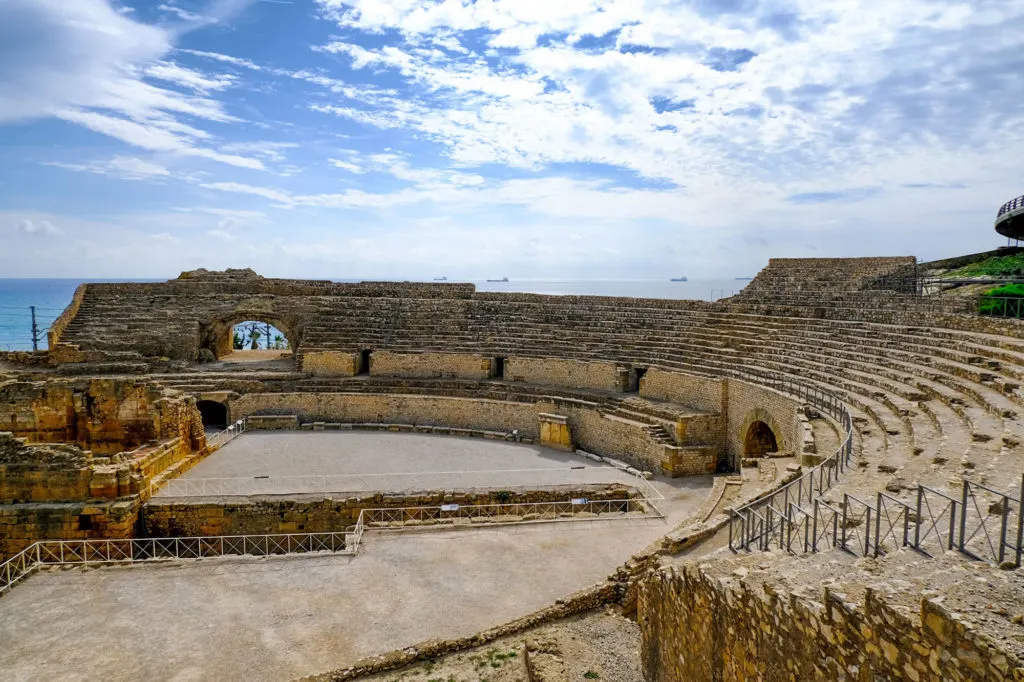
#875 – Archaeological Ensemble of Tarraco
Located on Spain’s Mediterranean coast, the city of Tarragona (Tarraco) was an important Roman provincial capital from 218 BC until the fall of the Roman Empire. Vestiges of this city, preserved in the UNESCO Archaeological Ensemble of Tarraco, paint a vivid picture of its past splendours. It is well worth visiting a day trip from Barcelona or even as a short city break in its own right.
Kids will love clambering around the magnificent Roman amphitheatre, that looks out to sea, and exploring the underground tunnels that link the first-century Roman circus to the Praetorium. There’s a local forum with a portion of a Roman basilica, a cistern and some fine Corinthian columns. Tarraco’s remaining Roman walls line a tasteful Archaeological Promenade (Passeig Arqueològic).
Buy a day pass to allow you to visit the Roman Walls, the Praetorium and Roman Circus, Amphitheatre and Local Forum.
But what I liked the most about Tarragona is that its Roman footprint is planted firmly in its Old Town. You unexpectedly stumble upon Roman walls and the restaurant-lined Plaça del Fòrum is the site of Provincial Forum, Tarraco’s administrative nerve centre.
But there are more things to do in Tarragona than visit its Roman sites. Its Old Town is charming; it has a show-stopping cathedral and you can soak up the sun on its broad sandy beach. Tarragona’s Central Market, housed in hallmark Modernist building, is the perfect place for a lunch stop.
Stay the night at H10 Imperial Tarraco, a great little place not far from the Roman amphitheatre.
Suggested by Bridget of The Flashpacker

#987 Roman Walls of Lugo
According to legend, a roman Legion was tasked with protecting a vast stretch of forest in northern Spain. Wether this is true or not, eventually the town of Lucus was built within the massive walls. While none of that ancient town still exists, the wall has remained standing an intact for seventeen centuries.
This is one solid wall. It is about two kilometers in length with seventy-one towers and ten gates. It’s wide enough on the top of the walls for at least four soldiers to walk abreast and even wider, up to twenty feet wide in some places. And while it may be true that the only Roman town is no longer there, the views from atop the walls of the old town are still incredible.
Walking the wall around Lugo is easy and will take about an hour, longer if you stop often like we did to see all of the gates and towers from below. We started our walk at the Puerta Miña, a gate not too heavily changed from Roman times, with stairs accessing the top of the wall. From here we followed the pedestrian flow that seemed to be mainly going in counter-clockwise direction.
Walk the walls in the morning or early afternoon, before the heat of the day, or in the late afternoon or evening when it starts to cool down. Take your time, smile and chat with fellow walkers, and enjoy the views of the town below. And remember, you are walking on a wall built nearly two thousand years ago! Lugo is an easy day trip from Santiago de Compostela.

#1044 Aranjuez Cultural Landscape
Not far from Madrid, about an hour south of the city lies the city of Aranjuez. For centuries, this small and beautiful spot was where the kings and queens of Spain chose to spend their springs. Because of their careful planning, the palaces, the gardens, the waterways, it was inscribed on the UNESCO world heritage list for its unique and special cultural landscape.
Immediately upon arriving in this city, especially after the chaos and big city grit of Madrid, you start to feel calm. Parking near the palace is plentiful, and you can wander the gardens, riverwalk, and grounds all day, along with those feeding the geese, artists capturing the beauty, and people like us who wanted to meander and take photos.
The most spectacular thing to see is the 18th century French-style Baroque garden which was modeled after the gardens of Versailles. The day we were there, the fountains shone white and the pink wildflowers and lavender took over the scene. It was beautiful, a perfect spot for some great Instagram photos, too.
The city is very peaceful and quiet, and our favorite place to stay is El Cocheron 1919. It felt so good to go out in the evening and relax.

Renaissance Monumental Ensembles of Úbeda and Baeza – 522 – The urban morphology of the two small cities of Úbeda and Baeza in southern Spain dates back to the Moorish 9th century and to the Reconquista in the 13th century. An important development took place in the 16th century, when the cities were subject to renovation along the lines of the emerging Renaissance. This planning intervention was part of the introduction into Spain of new humanistic ideas from Italy, which went on to have a great influence on the architecture of Latin America.

#1217 Vizcaya Bridge
Vizcaya bridge has been carrying passengers across the Ibaizabal estuary almost every day, since 1893. While that may not seem such a long time in comparison to, say, the Roman bridge in Merida it is a long time for a modern day wonder constructed from twisted steel ropes and iron girders.
This colossal bridge was an engineering solution designed to allow ships to pass through the busy channel without stopping the necessary pedestrian traffic crossing the river. It was the first of its kind, and become a model for others like it around the world.
The two cars go back and forth, crossing the river, all day on a regular basis. Passengers just walk aboard after paying the fare and glide quietly over the water. If a ship should need to pass the cars simply wait on the edge of the bank till the ship has passed.
Let’s face it, this is one World Heritage Site that will not take very long to visit. Head here for a morning or afternoon trip while visiting Bilbao. If you’re looking for lunch, try the Restaurante El Puente which offers a good lunch right in the shadow of the bridge (try the Squid in ink, it’s delicious).

#1312 Tower of Hercules
An immense lighthouse built on the side of a cliff, the Tower of Hercules measures 55 meters tall. Built by the Romans around the 1st century, the lighthouse after many improvements and renovations is still in use today. It signals to the boats that they are entering La Coruna harbor.
The entire area around the lighthouse is great for walking and photographing, and there’s no fee unless you want to climb the steps to the top of the lighthouse, which is highly recommended. I would try to go on a calm day so you don’t get blown away. We went in November and the wind whipped us left and right. We had to keep a very strong hold on our little ones.
The lighthouse can take you about an hour to wander around, and it’s an easy drive from Santiago de Compostela or Lugo, two cities that are well worth a stop. It’s easy to find a hotel in Galicia that can be your hub, so that you don’t have to change hotels while you see all the wonderful sights in the area.

#1313 Heritage of Mercury, Almadén and Idrija
Miners have been extracting ore and mercury in Almadén for thousands of years, making this one of the oldest and longest operating mines on the planet when it closed down operations in 2002. I had no idea mercury was such an important metal. Also known as quicksilver, it always had a sort of alchemist association for me. But i’ve always been intrigued by mines and never turn down a chance to dive deep into the earth and learn about how this particular aspect of geology has shaped social growth and development in a region.
The Almadén Mining Park does an excellent job of educating the public about mercury mining. I learned so much about mercury and its importance throughout history. A visit to the park will take about three or four hours. The trip down into the mine lasts about two hours by itself, but visitors will want more time in the museums and walking around the surface parts of the mine works.
Exhibits are hands on with plenty to do to keep kids engaged during the trip. However, children under four aren’t allowed to go down into the mines. It’s also important to note that there are only two mine visit each day. They fill up quickly so if possible purchase your tickets online ahead of time.
Almadén mining park is a little far from any other major sites so it doesn’t really make a good day trip from somewhere like Madrid or Córdoba. Instead plan on making it a stop on a road trip between the two cities. It lies at about the halfway point, so it makes a perfect lunchtime stop. Luckily the on-site cafeteria has excellent food at a good price. We highly recommend it.

#1501 – Antequera Dolmens Site
The Dolmens of Antequera is a site that includes three megalithic monuments and two natural rock formations. The megalithic monuments have been built sometimes around the Neolithic and the Bronze age and were used for burial rituals. They are very well preserved, making them one of the largest ancient European megalithic structures that are still standing. The three structures are two dolmens and a Tholos.
The dolmens are made out of upright stones that are holding a single flat stone over them, creating a chamber underneath. A Tholos is a circular tomb with beehive-like chambers, with the ceiling made out of stone slabs. It is believed that the dolmens, Menga and Viera, have been built much
earlier than the Tholos El Romeral, but they were all used for the same purpose.
The natural sites of the Dolmens of Antequera park include the Pena de los Enamorados and the Torcal de Antequera. The Pena de los Enamorados is known locally as the lover’s rocks and it is associated with an impossible love story that led to the death of the two lovers who preferred to leap from the top of the rock rather than be separated. There is a statue in the centre of Antequera which celebrates their love.
Torcal de Antequera has a unique landscape that was created by the erosion of the sea and the wind over millions of years. Hiking in the Torcal de Antequera is the best way to explore the limestone rock formations and discover the local geology, fauna and flora. There are high chances to meet mountain goats on the trail. There are three trails that go around the Torcal, two of them (green and yellow) being suitable for children as well.
Suggested by Joanna of The World in My Pocket
#1560 – Caliphate City of Medina Azahara
Medina Azahara stands a few miles outside of Cordoba. The remains of once a ruling city stand straight on the hot plains of Andalusia. The remains of “the Shining City”, Medina Azahara, used to be the ruling capital of Islamic Spain. It was built in the mid-10th century CE on the instructions of Abd ar-Rahman III al-Nasir. It was abandoned after it was looted in 1010. But it was the city of great significance in Al Andalus.
I enjoyed visiting the ruins of Medina Azahara very much as its intriguing architecture. It stands on a gentle hill that allows layered construction that you can still witness. It was worth the visit because I could spot the historic significance of “the Shining City”. With three levels, it exudes three varying roles. The topmost level used to be the royal palace, the middle one was overtaken by public gardens and governmental buildings and the lowest level was citizen’s houses and mosques. It is a great visit for kids as they can enjoy stunning views of the city from the top tier. They can also learn a lot of history on their visit.
Since the place is a few miles away from Cordoba, you can enjoy other things to do nearby. Popular things to do in Cordoba include visiting Jewish Quarter, Patios de Córdoba, Roman Bridge, and more. For a nice treat, travelers can visit Taberna la Montillana.
Suggested by Paulina of Paulina on the Road

#1618 – Paseo del Prado and Buen Retiro
The Paseo del Prado and Retiro Park in Madrid are some of the most famous parts of the city and an absolute must-see. The Paseo del Prado is often described as one of the most famous streets in the world and was only recently recognized as a World Heritage Site for its significance in the history of Madrid.
There are numerous museums including the iconic Prado of course which has a unique art collection. If you’re looking for a budget-friendly way to visit Madrid and the museum you should visit in the evenings between 6 pm and 8 pm when the entrance is free. Kids will most likely enjoy Retiro Park more where you can rent a row boat for the little lake or walk around and have a picnic if the weather is nice.
Have lunch at the El Botanico Restaurant in Retiro Park and enjoy the beautiful scenery. If you’re looking for a great luxury hotel that won’t break the bank you should stay at the El Emperador which has a beautiful rooftop terrace with a pool. It’s centrally located and will make your stay in Madrid memorable and an unforgettable experience.
Recommended by Victoria of Guide Your Travel
Not on the Iberian Peninsula or the Balearic Islands

#1372 – Cultural Landscape of the Serra de Tramuntana
The Serra Taramantuna was inscribed as a world heritage site because of the mountain ranges size that rise steeply out of the sea. Located on the northwestern coast of the Island of Mallorca, driving along the road, you can still see the terraced fields and the impact agriculture has had upon the land.
Driving the Sa Calobra road, rated as one of the most dangerous in the world, you can get a sense of how dangerous these mountains can be, and to have been able to live off it, farm it, shows great determination of the people who live there. Just moving water to irrigate the plants was a feat.
The mountains are stunning, the flora a mix of desert cactus and steely grass, taking you all the way down to the sea. It’s something that should be on your bucket list if you are visiting Mallorca, so make sure you rent a car.
The ride is a good day trip out of Palma, and it will take you about 30 minutes to get there, but it’s easy to spend the day finding a beachy cove or having a picnic. If you are staying in Palma, we recommend the Hotel Victoria Gran Meliá.

#310 Cave of Altamira and Paleolithic Cave Art of Northern Spain
Near the town of Santillana del Mar, about 30 km west of the Cantabrian capital of Santander, you can visit the iconic Altamira caves, or rather, the National Museum and Research Center of Altamira. The Altamira caves, discovered in 1868, feature stunning paintings of red bison and other paintings done between 36,000 and 11,000 years ago. The Altamira caves, discovered in 1868, feature stunning paintings of red bison done 36,000 and 11,000 years ago.
The Altamira caves themselves have been closed to all visitors since 2002 because it was determined that the carbon dioxide and water vapor from visitors’ breath was causing significant damage to the paintings. The museum has meticulously recreated the Altamira cave ceilings, paintings, and other paleolithic artifacts found in the caves and the museum is well worth the visit to understand not only the lives of the cave painters, but the efforts to preserve the art.
Along with the Altamira Cave, there are 16 other Paleolithic painted caves stretching across northern Spain in the Basque Country, Cantabria, and Asturias.
Several of the painted caves of Spain do allow visitors on a very limited basis. The caves that are open to the public are restricted to small group visits and are always accompanied by guides. Because the caves are managed by a variety of national and local authorities, regulations and access vary, and you will need to do your research to determine when and how you can visit. For example, the Covalanas cave near Ramales de la Victoria in Cantabria, only allows three people per visit and only does 5-7 tours per day.
Recommended by Tom of Travel Past 50
#929 – San Cristóbal de La Laguna – Tenerife, Canary Islands
La Laguna is popularly considered to be the most important and beautiful town in Tenerife. It can easily be reached from Puerto de la Cruz or Santa Cruz. It has a historic town center with narrow streets spread across colorful pastel houses, bars, and a line of small stores. The town was listed as a UNESCO World Heritage site in 1999. It is because the town is beautiful and has young energy. This photogenic town is known for its exciting nightlife.
I enjoyed my visit to this wonderful place in Tenerife because it is where young minds meet and create a bustling city environment. The city is worth the visit for those who like a happening environment. La Laguna always enjoys street musicians, restaurants and bars, several taverns, and even more. It is indeed a great visit for the kids too since it is lined up with retail stores, and shops with vintage products and fashion brands. Kids would love to catch the dazzling scenes of this city.
Apart from the hustle and bustle, there are a lot of things to do in La Laguna. You can explore mansions, churches, and historic buildings that set this city apart. La Laguna Market, Calle de San Agustin, and the Cathedral are a few must-visit spots. These can be among the exciting things to do in Tenerife with kids.
Travelers can visit La Tasca de Araba for a rustic dine-in experience. For an added fun experience, try visiting this bustling city in winter.
Suggested by Paulina of Paulina on the Road

#1258 – Teide National Park, Tenerife, Canary Islands
Teide National Park covers the volcano Mount Teide and surrounding area at the centre of Tenerife in the Canary Islands.
At 3,715 m, Mount Teide is the highest mountain in Spanish territory, the highest volcano in the Atlantic Ocean islands and the third highest volcano in the world from its base in the ocean floor. It is also one of the Decade Volcanoes, a collection of 16 active volcanoes around the world that volcanologists monitor most closely due to their potential for destructive eruptions and their proximity to built-up areas. Its most recent eruption was in 1909.
You can get into Teide National Park from the south east and west by car or bus – a road runs through the vast caldera, with several viewing points along the way.
To get to the highest point, Pico del Teide, there is a steep path but most people take the cable car. At the top of the cable car, there are options to hike around the volcano and up to the summit, or you can simply wander around the viewing platform, which is suitable for people of all ages. The rocky volcanic landscape is bleak and alien-like, and the views across the island and the ocean are breath-taking on a clear day.
Top Tip: make sure you dress for the occasion: it is cold up there, even in the peak of summer!
Suggested by Martha from May Cause Wanderlust
Author Bio: Corinne Vail is a travel photographer, food lover, and a perpetual traveler who has been travel writing for over 14 years. For many years she lived overseas in Germany, Japan, Turkey, South Korea, and the Netherlands teaching the children of the US. military. She’s visited over 90 countries, and she’s not stopping anytime soon.

